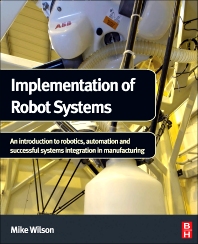Books in Engineering and technology
Books in Engineering and technology
The Engineering and Technology portfolio includes comprehensive overviews of all major research and practical developments in aerospace and automotive engineering, civil and environmental engineering, mechanical and industrial engineering, materials engineering, electrical engineering, communications engineering, and more. In-depth coverage, innovative state-of-the-art approaches, and real-world case studies provide valuable, actionable insights for researchers, applied engineers and students. The content in Elsevier's Engineering and Technology books program addresses core issues in industry and society, such as sustainability, the circular economy, AI, and automation.
- 1st Edition
- November 19, 2014
- Ralph Peters
- English
- Paperback9 7 8 0 1 2 3 9 7 0 4 2 8
- eBook9 7 8 0 1 2 3 9 8 2 9 1 9

Reliable Maintenance Planning, Estimating, and Scheduling
- 1st Edition
- November 18, 2014
- Rajiv Kohli + 1 more
- English
- Paperback9 7 8 0 1 2 8 1 0 3 3 0 2
- Hardback9 7 8 0 3 2 3 3 1 3 0 3 2
- eBook9 7 8 0 3 2 3 3 1 1 4 5 8

Developments in Surface Contamination and Cleaning, Volume 7
- 1st Edition
- November 17, 2014
- Rajiv Kohli + 1 more
- English
- Hardback9 7 8 0 3 2 3 2 9 9 6 1 9
- Paperback9 7 8 0 1 2 8 1 0 3 3 8 8
- eBook9 7 8 0 3 2 3 3 1 2 7 1 4

Developments in Surface Contamination and Cleaning, Volume 8
- 1st Edition
- November 17, 2014
- Mike Wilson
- English
- Hardback9 7 8 0 1 2 4 0 4 7 3 3 4
- Paperback9 7 8 0 1 2 8 1 0 0 7 7 6
- eBook9 7 8 0 1 2 4 0 4 7 4 9 5

Implementation of Robot Systems
- 1st Edition
- November 14, 2014
- Thomas Chapman + 5 more
- English
- Hardback9 7 8 0 0 8 0 9 9 9 6 9 2
- Paperback9 7 8 0 0 8 1 0 1 5 9 1 9
- eBook9 7 8 0 1 2 8 0 0 4 3 4 0

HSPA Evolution
- 1st Edition
- November 11, 2014
- Nam-Ho Kim + 2 more
- English
- Paperback9 7 8 1 7 8 2 4 2 1 7 3 3
- eBook9 7 8 1 7 8 2 4 2 1 7 4 0

Geometry of Design
- 2nd Edition
- November 8, 2014
- Rolf Wuthrich + 1 more
- English
- Hardback9 7 8 0 3 2 3 2 4 1 4 2 7
- Paperback9 7 8 0 1 2 8 1 0 3 0 8 1
- eBook9 7 8 0 3 2 3 2 6 5 6 4 5

Micromachining Using Electrochemical Discharge Phenomenon
- 1st Edition
- November 8, 2014
- Rose Sinclair
- English
- Paperback9 7 8 1 8 4 5 6 9 9 3 1 4
- eBook9 7 8 0 8 5 7 0 9 5 6 1 9

Textiles and Fashion
- 1st Edition
- November 7, 2014
- Juan A. Gallego-Juarez + 1 more
- English
- Hardback9 7 8 1 7 8 2 4 2 0 2 8 6
- Paperback9 7 8 0 0 8 1 0 1 3 4 9 6
- eBook9 7 8 1 7 8 2 4 2 0 3 6 1

Power Ultrasonics
- 2nd Edition
- November 7, 2014
- Ioan D. Marinescu + 2 more
- English
- Paperback9 7 8 0 1 2 8 1 0 2 6 0 2
- Hardback9 7 8 1 4 5 5 7 7 8 5 8 4
- eBook9 7 8 1 4 5 5 7 7 8 5 9 1

Handbook of Ceramics Grinding and Polishing